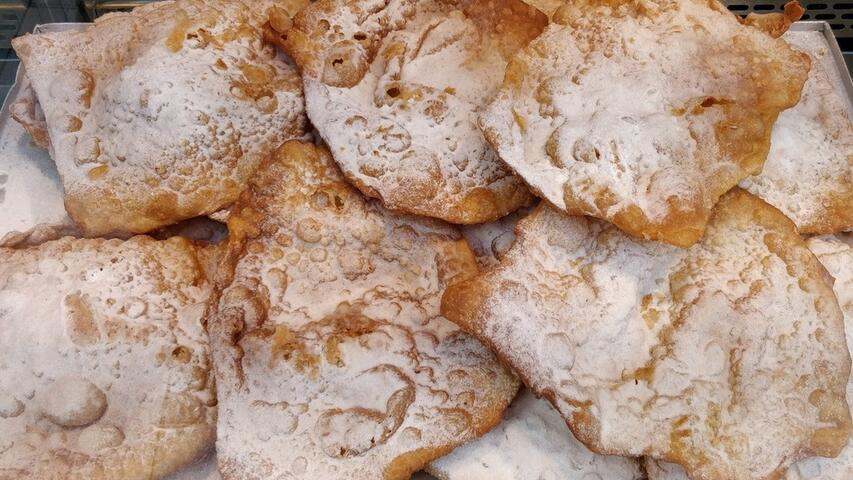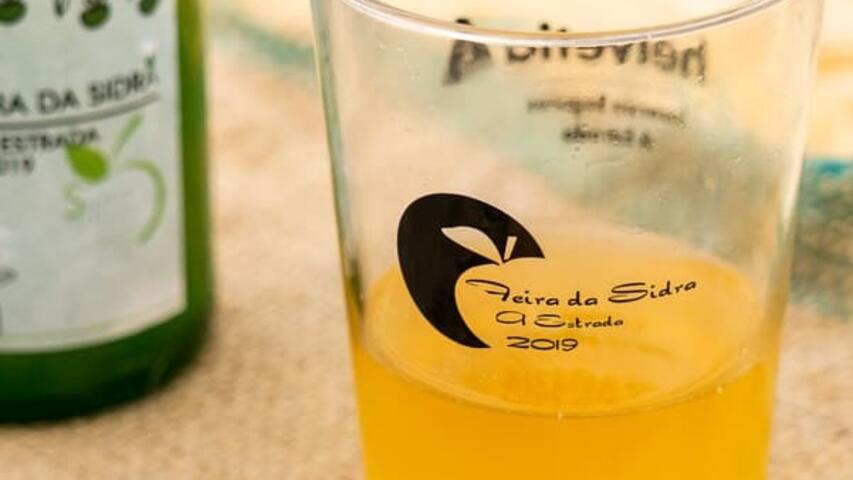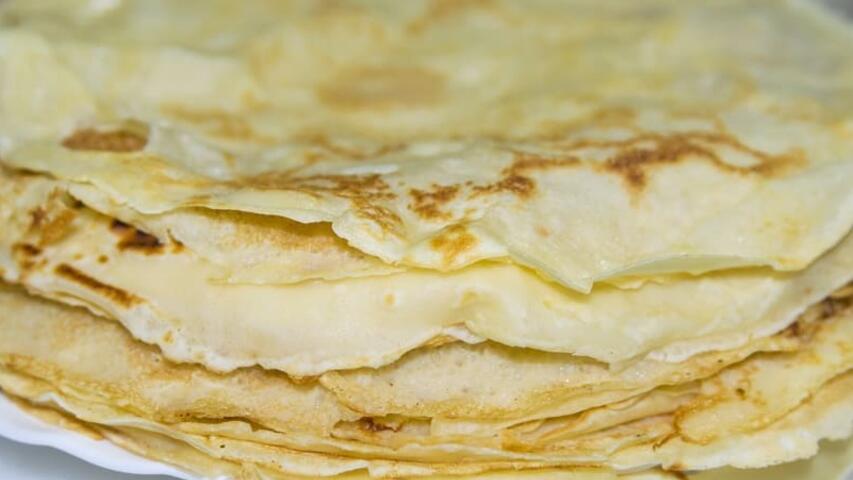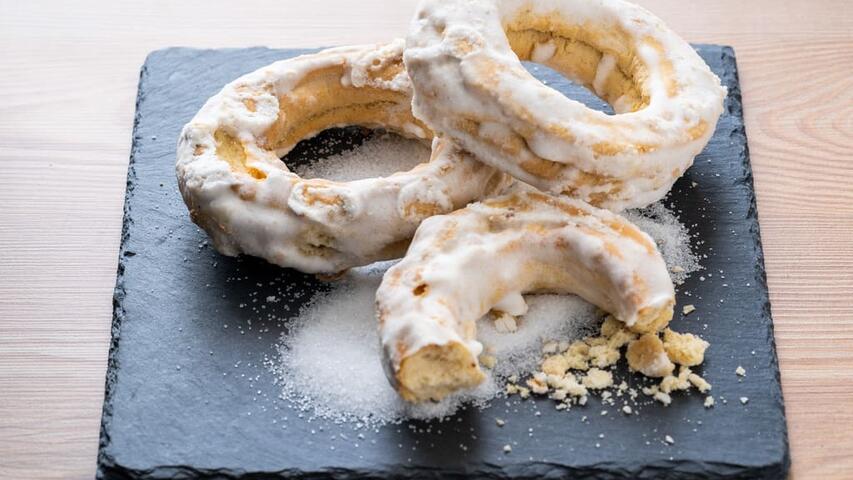Delicious morsels
Traditional and exquisite: this is what Rías Baixas desserts are like.
The land has been more than generous with As Rías Baixas; the quality products it offers give rise to true delicacies in the field of confectionery, from typical desserts, such as filloas or doughnuts, to products of excellent workmanship and unique flavour, such as Galician honey.In addition to these sweets, this autonomous region is also home to other more natural delicacies, including various fruits, such as apples and mirabelles.
Typical desserts
One of the most popular desserts in the province of Pontevedra is the characteristic filloas, similar to the famous French crepes, which are traditionally made with flour, milk and eggs. Pig's blood can also be added to this recipe, with a delicious result. Filloas are sweet, unlike crepes, and can be flavoured with sugar, honey or chocolate, and can even be accompanied by quince or boiled chestnuts.
This typical Galician after-dinner food is cooked especially on dates such as Carnival or the pig slaughter (San Martiño). The filloas made in the parish of Valongo (Cercedo-Cotobade) are well known, as the Festa da Filloa has been held in their honour for almost 40 years.
Chulas, a very popular typical Galician dessert, in Pazos de Borbén, are very similar to filloas in terms of their ingredients, but the final step in their preparation, however, is very different, as the mixture is fried in plenty of oil.
Popular festivals
Filloas are typical of the carnival in As Rías Baixas, but the rosquillas and melindres de Ponteareas, with more than 100 years of history, are other traditional sweets that are always present at any festival, pilgrimage or any popular event. In the beginning, these handmade products were only sold at fairs, festivals and pilgrimages, but nowadays they can be bought all year round in confectioners and patisseries.
Silleda is one of the cradles of these two confectionery products which are the protagonists of traditional Galician pilgrimages. The doughnuts of the parish of Abades have been made in the traditional way for more than a century and for the last 30 years a festival in honour of this sweet has been organised there every Easter Sunday. Gondomar also has a long and prosperous doughnut tradition.
The Easter bun, also known as bolo de ovos, a bread baked with whole raw eggs that is made in the regions of O Salnés and Caldas, dates back to the same season. It was a typical custom at this time of year for godparents to give their godchildren the bun and godmothers the doughnut.

The roscón de yema de A Guarda is an exquisite traditional sweet that was first introduced in the mid-1960s by bakeries and pastry shops in the Baixo Miño area. The dough of this delicious dessert is a spongy brioche filled with candied egg yolk. Very different, although they share the same name, is the roscón de Caldas de Reis. The ingredients of this typical sweet, which can take more than six hours to make, are: sugar, lard, egg and flour.
The last thing we present is the vincha or bandullo, a dessert typical of the region of Tabeirós-Terra de Montes that is in danger of extinction. It is made inside the pig's bladder, previously inflated and tanned, where a mixture of eggs, milk, cinnamon, lemon, walnuts, sugar, bread and lard is cooked. The description may come as a surprise, but the result is delicious.
Other products
Galician honey is a natural product that has been produced in a traditional way since ancient times. The climate of As Rías Baixas, particularly mild and benevolent with direct influence from the sea, gives rise to a rich and varied flora that allows the production of both monofloral honey and a range of millifloral honeys. The apiaries are usually small and artisan, cared for with the utmost care and attention to detail, achieving first-class quality.
In the province of Pontevedra, in the mountainous lands of As Neves, bathed by the river Miño, or in the parish of Zobra in Lalin, immersed in the O Candán mountain range, an excellent quality honey is produced, protected under the Protected Geographical Indication Mel de Galicia. This sweet and exquisite nectar can accompany cottage cheese or dried fruit and nuts and is a very healthy typical dessert. In Baiona, honey and walnuts become the star products during the popular pilgrimage of San Cosme and San Damián.

The cattle that are born in the green pastures of the interior of the province, reared in the open air and fed on natural products, are the source of a unique quality milk, the main ingredient of the cottage cheese that is made in a simple and traditional way, such as that of As Neves or Cotobade.
It is a fact that the extensive meadows and fields of the province of Pontevedra offer real treasures for the palate. Throughout its territory there is a wide variety of fruit trees that produce nature's sweets, fruits. In the north of the province, A Estrada has a long tradition of apple and cider production that dates back to the Middle Ages.
Organic farming
In recent years, the apple and cider industry, the liquid gold of A Estrada, has undergone significant growth, consolidating a sector that today has more than 30 organic cider producers. Producers, both local and foreign, gather the first weekend of June in the town of A Estrada to celebrate the Cider Festival.
Apple production in Marín is also important. This town on the O Morrazo peninsula has more than 30 varieties of native apples used to make cider. This diversity of raw material gives its cider a unique and very characteristic flavour. On the day of Santo Tomé de Piñeiro, at the beginning of October, tribute is paid to him.
This route takes us to the south of the province of Pontevedra, where we can find many varieties of fruit trees, with non-native fruits such as kiwis and mirabelles and native ones such as cherries. Tomiño is the largest municipality in the province in terms of the number of kiwi plantations. This fruit arrived from New Zealand and more than half of its production in Spain comes from Galicia, especially from the south of the province.
The cherry tree has undoubtedly become the emblem of the parish of Beade (Vigo). This tree is so characteristic of the place that many neighbours have one in their gardens. The traditional cultivation of cherries in Beade is of vital importance to the economy of many families in this parish and the most common variety is the so-called "picuda", a small, heart-shaped, sweet and very tasty cherry.
On the banks of the river Miño, a natural border with Portugal, is O Rosal, home for decades to the mirabelle. This golden fruit arrived in As Rías Baixas from the German Black Forest, where it has been produced since 1935. The mirabelle, a cousin of the plum, is a gastronomic delicacy that is difficult to find outside Galicia as a fresh product due to its short shelf life.



